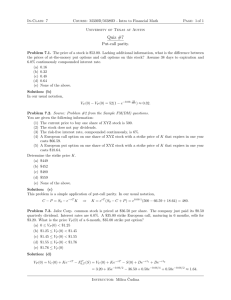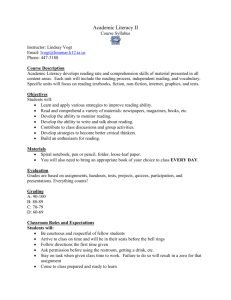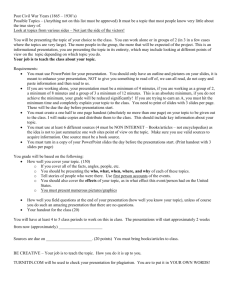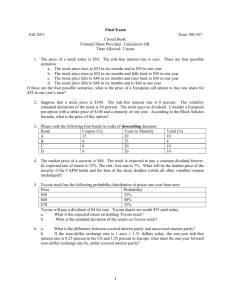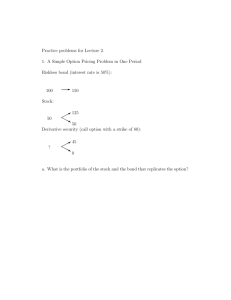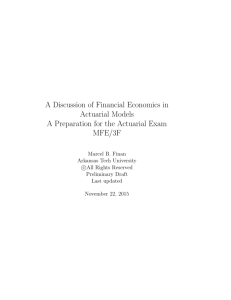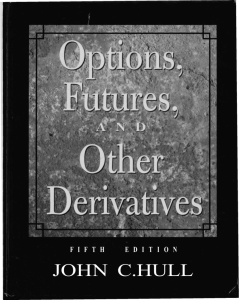Practice problems for Lecture 3. Answers. 1. A Simple Option Pricing
advertisement
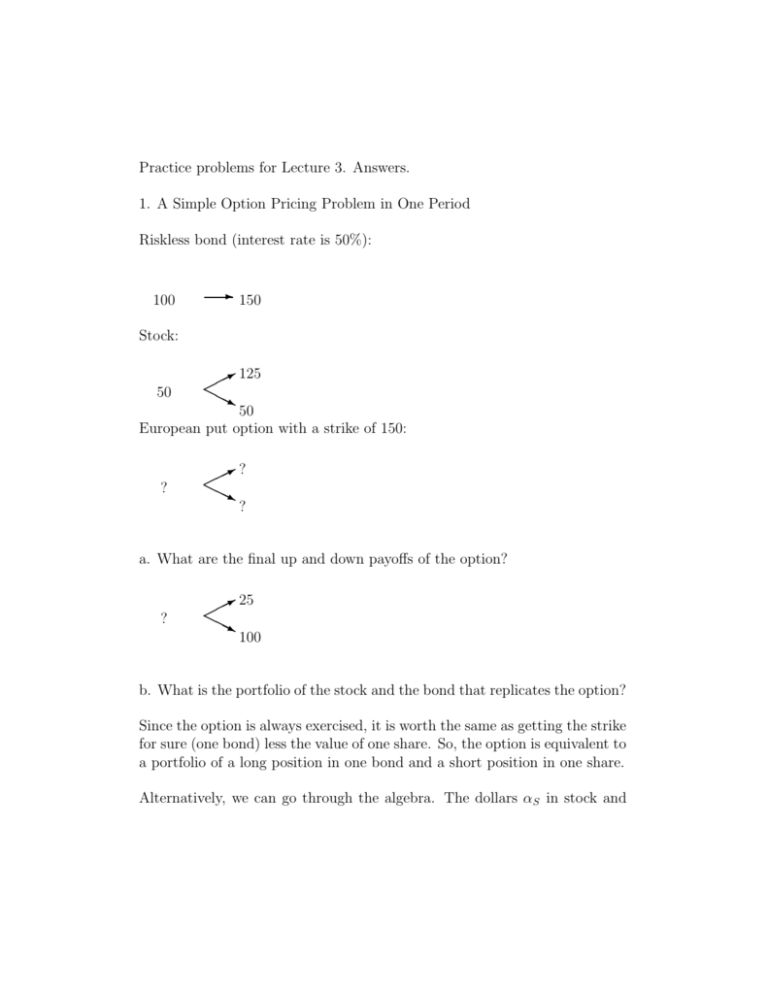
Practice problems for Lecture 3. Answers. 1. A Simple Option Pricing Problem in One Period Riskless bond (interest rate is 50%): 100 - 150 Stock: 50 * 125 H HH j 50 European put option with a strike of 150: ? *? H HH j ? a. What are the final up and down payoffs of the option? ? * 25 H HH j 100 b. What is the portfolio of the stock and the bond that replicates the option? Since the option is always exercised, it is worth the same as getting the strike for sure (one bond) less the value of one share. So, the option is equivalent to a portfolio of a long position in one bond and a short position in one share. Alternatively, we can go through the algebra. The dollars αS in stock and αB in bonds satisfy 150 125 αS + αB = 25 50 100 50 150 αS + αB = 100 50 100 Subtracting, the two equations, we have that (75/50)αS = −75 or αS = −$50 (short one share). Using the first equation, the bond position then satisfies (125/50)(−50) + (150/100)αB = 25 or −125 + 1.5αB = 25 or 1.5αB = 150, implying that αB = $100, which is long one bond. c. What is the price of the replicating portfolio? price = αS + αB = −50 + 100 = $50 d. Verify the option price using risk-neutral probabilities. r= 150 100 = 1.5, u = 125 50 = 2.5, and d = 50 50 =1 The risk-neutral probabilities are πu = r−d 1.5 − 1 1 = = u−d 2.5 − 1 3 πd = 1 − 1 2 = 3 3 The European put price is 1 1 2 1 (πu Vu + πd Vd ) = 25 + 100 = $50 r 1.5 3 3 2 e. Would an American put have the same price? No. If exercised initially, an American put would be worth 150 − 50 = 100 > 50. 2. Thought questions (answer each in a sentence or two of ordinary length) a. For call options on a stock that pays no dividends, early exercise is never optimal. However, this is not true in general for put options. Why not? Delaying exercise of a call gains interest on the strike, but delaying exercise of a put loses interest on the strike. b. The price of a call option with positive strike price is always less than the stock price. Why? Getting a share for free now is better than getting a share some of the time later and having to pay for it. c. The price of a European put option is never greater than the strike price. Why not? Getting the strike now is better than getting the strike some of the time later and having to give up a share for it. 3. Put-call Parity Sad Corp (SC) is a distressed firm that is not expected to pay dividends over the next year. SC stock is currently at $10, and it costs $7 to buy an at-the money call option on SC maturing one year from now. The price of a riskfree zero-coupon bond with a face of $100 maturing one year from now is $95. Assume there is no arbitrage. General: this problem expects you to know that put-call parity applies to European options, and that for non-dividend paying stocks, American and European calls are worth the same but American puts can be worth more than European puts. 3 a. If the call option described above is a European option, what is the price today of an at-the-money European put option on SC maturing one year from now? S+P =B+C P = B + C − S = 9.5 + 7 − 10 = $6.5 b. If the call option described above is an American option, what do we know about the price today of the same European put option? no change from a., since American and European calls on non-dividendpaying stocks are worth the same c. If the call option described above is an American option, what do we know about the price today of an at-the-money American put option on SC maturing one year from now? An American put can be worth more than a European put, so the put value is ≥ $6.5. (More subtle arguments can be used to show that the put value is also ≤ 6.5 + 10 − 9.5 = $7. I leave the argument to the finance jocks in the class.) 4
